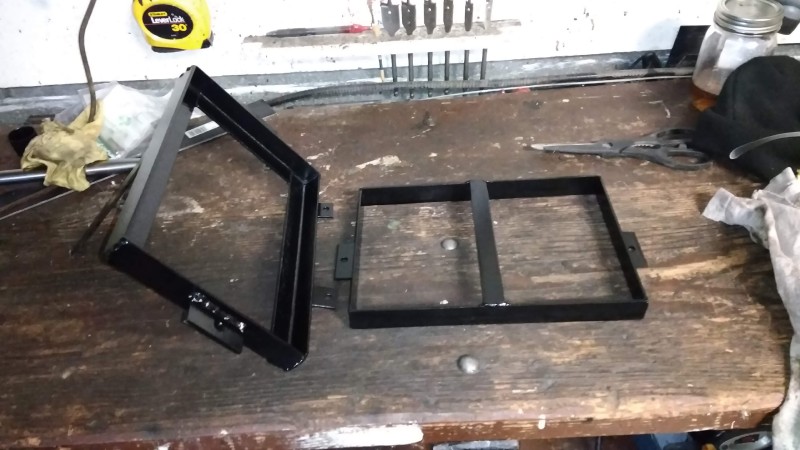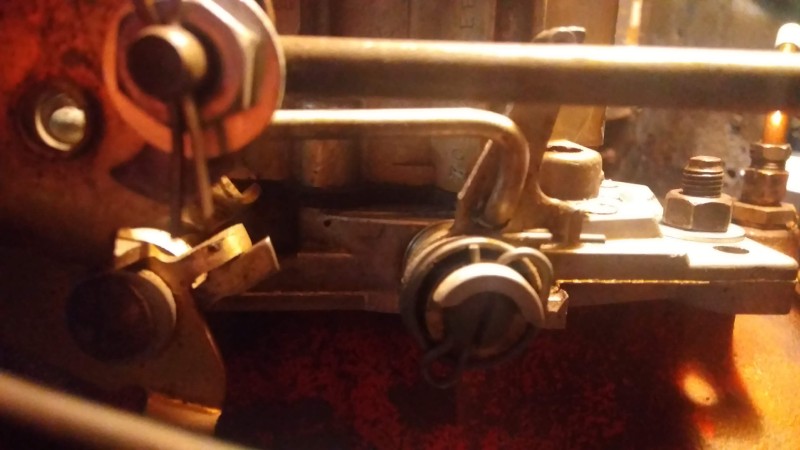FinoCJ
Well Oiled
So while waiting on parts I have a couple other projects I am working on...
1) getting the radiator reinstalled. One of the issues has been the battery tray, which has been re-located to the right front inner fender as part of the sbc swap, blocks the output radiator hose on that side. The tray is mounted with two bolts to the inner fender, and has a support leg underneath that was welded to the frame that is the problem. Although this pic doesn't quite do it justice, the leg blocks about 1/4 or so of the hose outlet.

I pulled the battery tray entirely (cut the leg support off the frame), it needed a bit of cleanup and paint, and I also made a top half 'hold-down' that will go with it. Up till now the battery has been classically bungee corded in place. This will be way more solid with some threaded hook rods and wing nuts...I made it using only pieces of scrap I had sitting around so its bit goofy but I avoided C19 infection at the local stores. My welds are not pretty, but they are better than whoever made the bottom tray!...

Battery tray back in - modified the base leg support (aka bent it inward) and welded it back to the frame cross-member giving more space for the radiator hose to fit on the radiator outlet...sorry not best pic...

Also got my fabricated top of battery hold down in place and it seems like its going to work well...fans shroud clears everything nicely...

1) getting the radiator reinstalled. One of the issues has been the battery tray, which has been re-located to the right front inner fender as part of the sbc swap, blocks the output radiator hose on that side. The tray is mounted with two bolts to the inner fender, and has a support leg underneath that was welded to the frame that is the problem. Although this pic doesn't quite do it justice, the leg blocks about 1/4 or so of the hose outlet.

I pulled the battery tray entirely (cut the leg support off the frame), it needed a bit of cleanup and paint, and I also made a top half 'hold-down' that will go with it. Up till now the battery has been classically bungee corded in place. This will be way more solid with some threaded hook rods and wing nuts...I made it using only pieces of scrap I had sitting around so its bit goofy but I avoided C19 infection at the local stores. My welds are not pretty, but they are better than whoever made the bottom tray!...

Battery tray back in - modified the base leg support (aka bent it inward) and welded it back to the frame cross-member giving more space for the radiator hose to fit on the radiator outlet...sorry not best pic...

Also got my fabricated top of battery hold down in place and it seems like its going to work well...fans shroud clears everything nicely...































